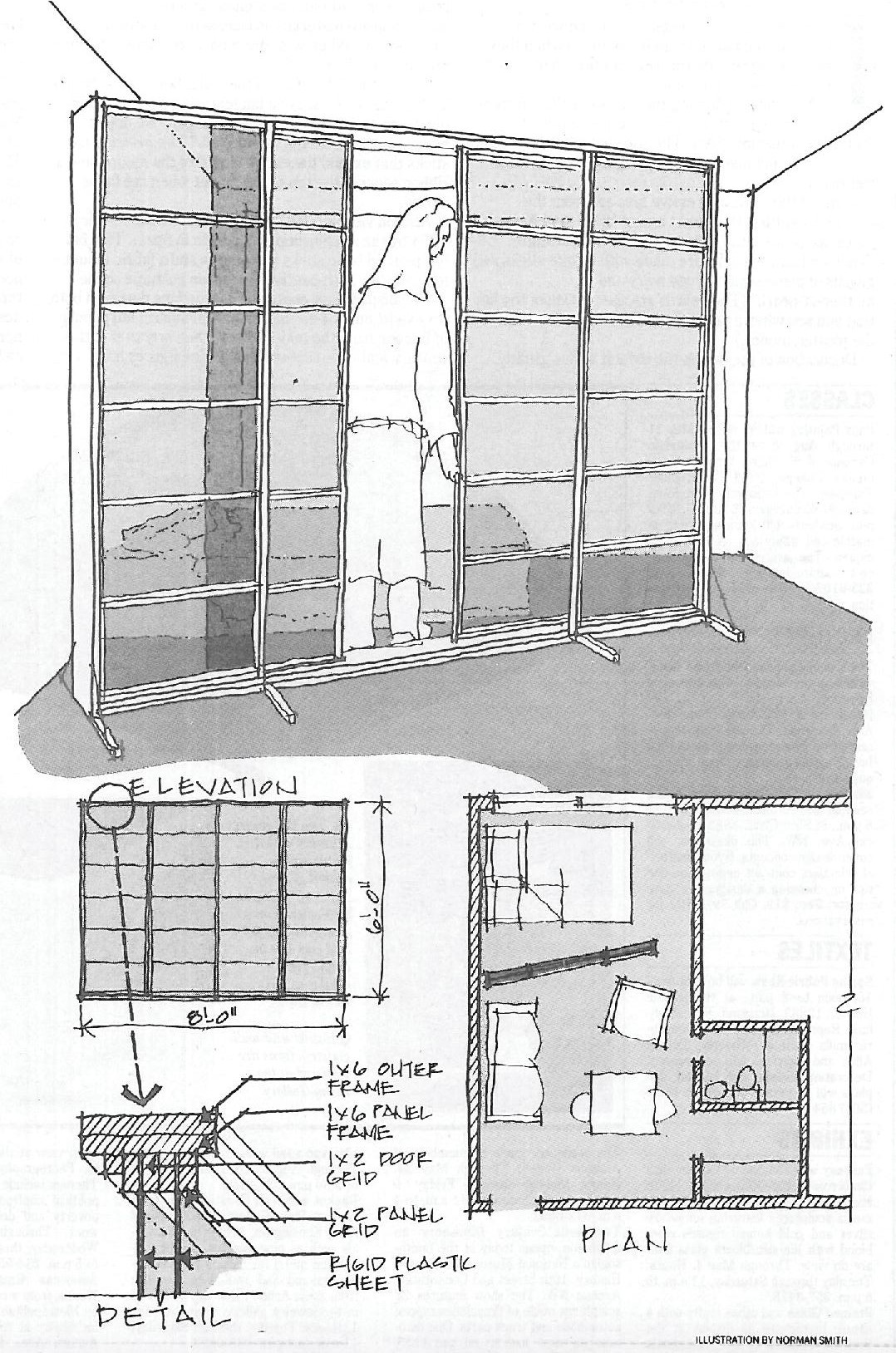Divide and Conquer
Solve the Studio Privacy Problem With a Movable Wall
.
Divide and Conquer
Solve the Studio Privacy Problem With a Movable Wall
By Norman Smith
Space in an efficiency or studio apartment often performs several duties. Larger apartments are clearly zoned into private sleeping spaces and public living areas, but a small one-room apartment doesn’t have that luxury. Adding permanent walls usually is out of the question, but a temporary wall with sliding doors can lend some privacy and, when the time comes, be taken with you.
Depending on the apartment layout and what needs to be screened from view, you can position the wall to create an eating, living or sleeping area. In the illustration, the wall is placed between a bed and a combination living/dining area to provide sleeping privacy or hide an unmade bed.
Two basic design strategies will make the small space feel larger than it actually is: bringing in as much light as possible, and introducing non orthogonal (non- right-angle) configurations that deliberately distort conventional perceptions. Using translucent materials for the wall (in the case, rigid plastic sheets) and providing panels that can open will allow light to penetrate the room. Angling the furniture and skewing the wall slightly will help maximize living space while adding an intriguing visual element.
Because the wall is designed to be lightweight and removable, its dimensions are kept to manageable size, about 6 feet tall and 8 feet long with the 8 length divide into two fixed and two sliding door panels. Thin strips of wood-1-by-1s and 1-by-2s for the doors and panels with 1-by-2s for the doors and panels with 1-by-6s at the top, bottom and sides-help keep the weight to a minimum. Heavier 1-1/2-inch thick stock is used at the bottom to create a strong base.
To make construction easier, each end panel and the two center door panels can be made as separate units, then fastened together with screws within an overall frame on 1-by-6s the full dimension of the walls. The panels are constructed much like a window grid, using 1-by-2s on both sides of thin sheets of translucent plastic to form a sandwich, then fits into a 1-by-6 framework. The plastic sheet is available in different colors and surfaces that range from nearly transparent to almost opaque.
Even though the wall is meant to be movable and, ultimately, transportable, it needs support to keep from tipping over. Two short legs at either end, made from 1-by-2s and hinged with folding table leg braces, extend to stabilize the wall. Two more pairs of legs, one on either side of the center panels, provide additional support. To shift the wall about the room, simply fold up the legs and move it. When it comes time to move, unscrew the panels from each other and take them out the door.
Norman Smith is a practicing architect in the Washington area. For help with your design problems, send snapshots and dimensions to him in care of info@taurusdev.com
